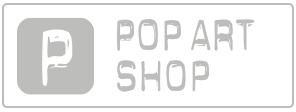.jpg)
Blick in die Ausstellung
Projekt #13: malatsion
DavisKlemmGallery Projektraum, Kirchstraße 4, 65239 Hochheim am MainProject #13: malatsion
THE ARTIST
malatsion (*1974) comes from Saint-Tropez, France. She studied archaeology, art history and fine arts in France - fields of activity that are can be found in her works. Since 2004 she lives and works in Frankfurt, Germany. Her works are regularly exhibited throughout Europe and internationally. She has been honored and supported by numerous scholarships, most recently receiving a travel grant from the Goethe Institute, which took her to Norway.
MATERIALS
In aquariums filled with water are soft sculptures, molded from silicone that the artist has colored with pigments. Weighted down with stones, the sculptures remain on the bottom of the aquariums. Like aquatic plants, the delicate sculptures “grow” in the water. Pumps create a slight movement in the water, making an impression that the sculptures are organic..
PRODUCTION
malatsion has developed the installation like a construction kit. Each individual part was carefully selected. The silicone parts are poured into molds and the silicone is mixed with a certain density of pigments to create layers of translucent and opaque layers. The water is treated with additives to prevent the formation of algae and thus discoloration. It also had to be left to stand for some time to prevent the formation of air bubbles, which would undesirably alter the visual impression. Setting up the installation can therefore take several days.
INFLUENCE
In the past, artists were usually not only dedicated to art. They experimented with the production of colors and materials, traveled and explored the world at the same time, were well-read and explored perspective and mathematics. In recent years, this form of open engagement with the world has come back into focus under the term "artistic research". Artists not only use genuinely "artistic" means - paint and brush, stone and chisel, paper and pencil, camera and light - but also methods that are regarded as scientific. They categorize, reveal connections and explore. malatsion also questions the purpose and benefits of research: are science, research and technology really as free from subjectivity as we think?
INSTALLATION
malatsion presents project #13 as a laboratory – leaving an impression of living organisms in a sterile research atmosphere. But if the objects of investigation were produced by the artist herself - what is being researched? malatsion gives her sculptures the title "Healing Process. Holobiont". A holobiont is "a concept from biology that refers to a community of organisms that live together in a symbiosis" (source: www.pflanzenforschung.de) Sutures on the sculptures refer to a surgical procedure that may have something to do with the healing process.
The installation is one of the artist's various methods of approach to the topic of humankind and environment. The objects undergo a healing process in an environment that is shielded from humans and at the same time created by humans. This refers to the process of renaturation, which gave many natural environments the opportunity to recover during the Corona pandemic - without human influence. malatsion's objects raise the question of artificiality and nature as well as the influence of humans on their environment, in both a positive and negative sense.
Water and sculpture, color and movement: malatsion succeeds in presenting a fascinating and aesthetic total work of art with many facets.
THE SPACE
The 20 m² room, in which pens and exercise books were previously sold, is now available to artists from the DavisKlemmGallery as a project space. Instead of regular but limited opening times, the room can be viewed around the clock: the entire room and thus the project can be viewed at all times thanks to the large window front. Changing projects, installations, works of art and artists can be discovered here. The current presentation will be on view until February 18th, 2024.
.jpg)
.jpg)
.jpg)
.jpg)
.jpg)
.jpg)
.jpg)
.jpg)
.jpg)
.jpg)
.jpg)




